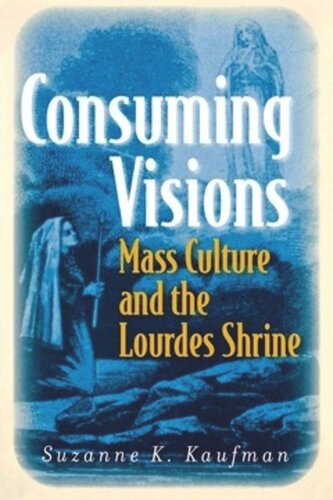

Most ebook files are in PDF format, so you can easily read them using various software such as Foxit Reader or directly on the Google Chrome browser.
Some ebook files are released by publishers in other formats such as .awz, .mobi, .epub, .fb2, etc. You may need to install specific software to read these formats on mobile/PC, such as Calibre.
Please read the tutorial at this link: https://ebookbell.com/faq
We offer FREE conversion to the popular formats you request; however, this may take some time. Therefore, right after payment, please email us, and we will try to provide the service as quickly as possible.
For some exceptional file formats or broken links (if any), please refrain from opening any disputes. Instead, email us first, and we will try to assist within a maximum of 6 hours.
EbookBell Team

4.3
98 reviewsPlastic Madonnas, packaged holy tours, and biblical theme parks can arouse discomfort, laughter, and even revulsion in religious believers and nonbelievers alike. Scholars, too, often see the intermingling of religion and commerce as a corruption of true spirituality. Suzanne K. Kaufman challenges these assumptions in her examination of the Lourdes pilgrimage in late nineteenth-century France.Consuming Visions offers new ways to interpret material forms of worship, female piety, and modern commercial culture. Kaufman argues that the melding of traditional pilgrimage activities with a newly developing mass culture produced fresh expressions of popular faith. For the devout women of humble origins who flocked to the shrine, this intensely exciting commercialized worship offered unprecedented opportunities to connect with the sacred and express their faith in God.New devotional activities at Lourdes transformed the act of pilgrimage: the train became a moving chapel, and popular entertainments such as wax museums offered vivid recreations of visionary events. Using the press and the strategies of a new advertising industry to bring a mass audience to Lourdes, Church authorities remade centuries-old practices of miraculous healing into a modern public spectacle. These innovations made Lourdes one of the most visited holy sites in Catholic Europe.Yet mass pilgrimage also created problems. The development of Lourdes, while making religious practice more democratically accessible, touched off fierce conflicts over the rituals and entertainments provided by the shrine. These conflicts between believers and secularists played out in press scandals across the European continent. By taking the shrine seriously as a site of mass culture, Kaufman not only breaks down the opposition between sacred and profane but also deepens our understanding of commercialized religion as a fundamental feature of modernity itself.